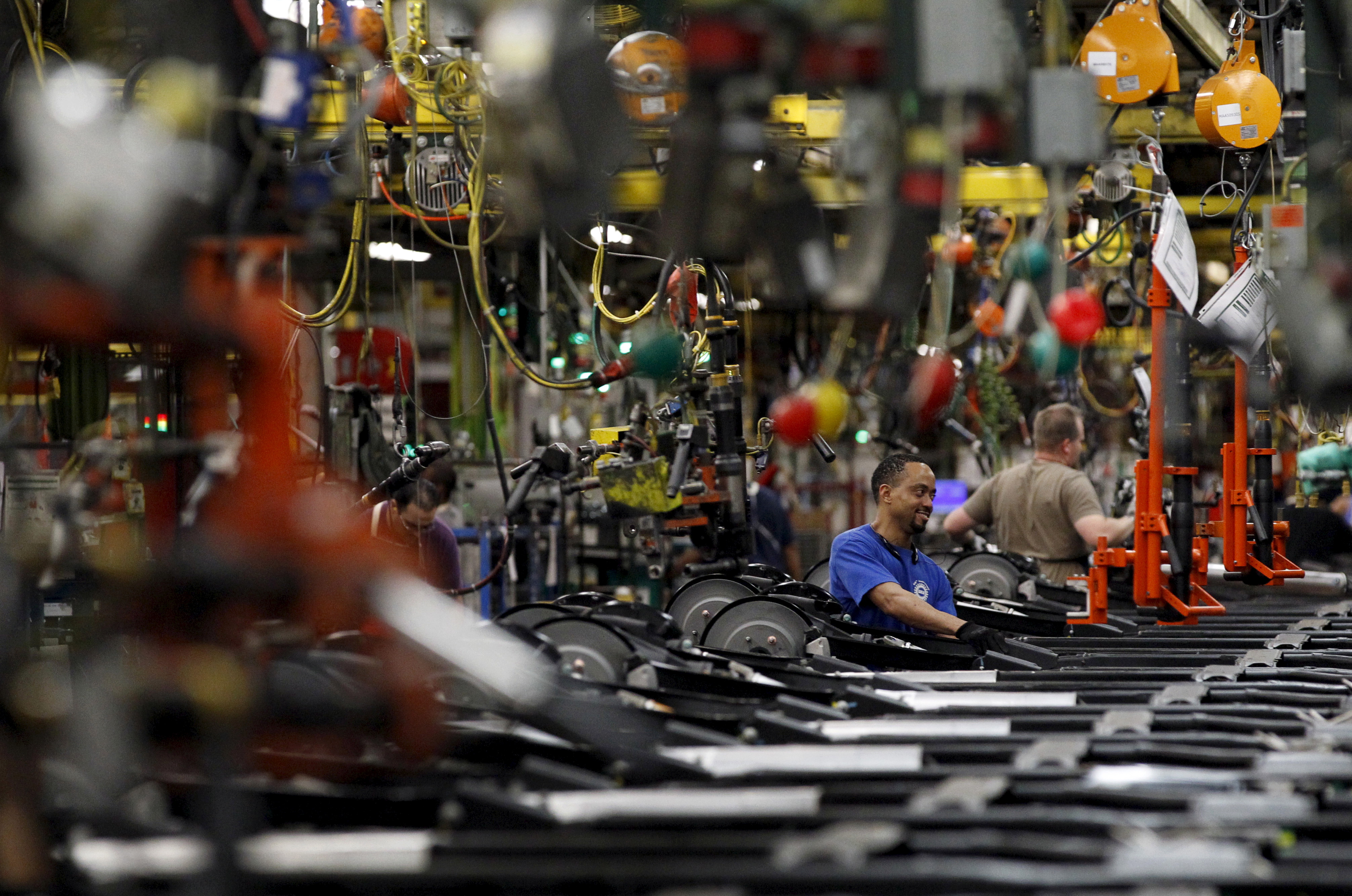How low can unemployment go?
The Fed keeps flubbing this basic question. Here's why.


How low can unemployment go?
It's a question Americans are no doubt excited to see answered. And the latest jobs report showed the unemployment rate falling from 4.5 percent in March to 4.4 percent in April. But officials at the Federal Reserve are asking this question, too. And unlike the rest of us, they regard the answer with fear and trembling.
Among the central bank's many duties is managing interest rates in the economy. It does this to balance the twin priorities of high job growth and stable inflation. Hike interest rates, and the Fed throws Americans out of work but cools inflation. Lower interest rates, and it gooses the economy but risks higher inflation.
The Week
Escape your echo chamber. Get the facts behind the news, plus analysis from multiple perspectives.

Sign up for The Week's Free Newsletters
From our morning news briefing to a weekly Good News Newsletter, get the best of The Week delivered directly to your inbox.
From our morning news briefing to a weekly Good News Newsletter, get the best of The Week delivered directly to your inbox.
What does this have to do with the unemployment rate?
Well, when an economy is recovering, lots of people who aren't working want jobs. Employers can hire without offering wage hikes; people are happy just to be employed again. But as the economy approaches full employment, businesses run out of formerly jobless workers. At that point, the only way to keep expanding is to coax workers away from other employers with offers of higher pay. Wages rise as employers compete for workers. And if those wage hikes force businesses to increase their prices, you get inflation.
On top of this, some level of unemployment in an economy is inevitable — not because some people must go without jobs, but because it takes time to switch from one job to another.
Hence the Fed's nervousness as unemployment falls: They don't want to hike interest rates too soon and squash a recovery. But they don't want to allow inflation to take off, either.
A free daily email with the biggest news stories of the day – and the best features from TheWeek.com
The Fed has even spun this worry into a more technocratic policy rule. It's called the "Non-Accelerating Inflation Rate of Unemployment," or, mercifully, NAIRU. According to the Fed's models, once the unemployment rate falls below the NAIRU threshold, the inflation rate won't just rise — it will keep rising indefinitely as long as we stay under the NAIRU.
This is where the problems start. There's actually no direct way to determine the NAIRU, assuming it exists. The Fed can only guesstimate it.
Historically, their estimates have not held up. There's been no meaningful statistical relationship between unemployment and inflation since the 1980s. A study by the Council of Economic Advisors suggested our ability to estimate the NAIRU got worse and worse after the early '90s, and completely fell apart after 2008.
As recently as 2014, the Fed and the Congressional Budget Office were pegging the NAIRU around 5.2 to 5.5 percent. Then the Fed revised it down to around 4.8 percent.
Now unemployment is 4.4 percent, and core inflation is still below the Fed's 2 percent target and barely twitching. We're basically engaged in a grand national economic experiment to find out just how wrong the Fed's NAIRU estimates are.
There was a particularly amusing incident in the late '90s: The unemployment rate was dropping as the economy boomed, and Fed officials — including now-Fed Chair Janet Yellen — started freaking out. But then-Chair Alan Greenspan basically browbeat the rest of the Fed committee into keeping interest rates low. His theory was that rising productivity rates would prevent inflation: If businesses are regularly figuring out how to do more with less, the savings can go into regular wage increases. As a result, prices don't necessarily rise even at full employment.
Greenspan was proven right: Unemployment fell to a remarkably low 4 percent and inflation remained low and stable. (Critics might say Greenspan was right on inflation, but that low interest rates also allowed the tech bubble to get out of hand — a separate argument with its own problems.)
What makes this all especially perverse is why runaway inflation is bad: It screws with price signals and wrecks production, thus destroying jobs and incomes. In Venezuela, for example, hyperinflation is leading to mass poverty and unemployment. So whenever it raises interest rates, the Fed is pre-emptively throwing people out of work to prevent inflation from … throwing people out of work. There's a "burn the village to save it" quality to their thinking.
At a minimum, this suggests the Fed is structurally biased in ways that cause it to perpetually overestimate the NAIRU and the threat of inflation. The Financial Times' Matthew Klein takes this critique even further: The NAIRU is more a crude rule of thumb than an iron law of the universe. Nailing it down at any given time is such an inexact science that it's basically pointless for policymakers to try it all.
Plus, there are lots of indicators the Fed could look at instead.
For one thing, the unemployment rate is merely a percent of labor force participation, and the labor force itself is still unnaturally depressed. The prime-age employment ratio — which, unlike labor force participation, isn't going to be thrown off by demographic changes — is still below its 2007 and 2001 peaks. Finally, if rising wages drive rising inflation, we could just look at the rate of wage growth itself — which also remains well below the target generally associated with full employment. These all explain why the official unemployment rate is likely underestimating how many jobless workers there are.
A lot of the Fed's problem here is institutional paranoia left over by the 1970s inflation crisis. The lesson the Fed seems to have learned is that, if you get below the NAIRU, inflation could suddenly rocket up very quickly. So they obsessively read the tea leaves in the economic data, trying to get ahead of an inflation increase that hasn't even begun yet. But this fear of being caught off guard is implausible, to put it mildly: The biggest inflation jump during the 1970s — from 2.5 percent to 10 percent — took two years. And the whole crisis was a fluke created by a perfect storm of circumstances, likely never to be repeated.
The Fed's policy of slowly hiking interest rates in small increments may seem prudent, and it would make sense if inflation was already at 4 percent or so. But today, even those increases makes no sense at all.
Point being, the Fed doesn't need the NAIRU to do its job. When it perpetually overestimates the NAIRU, it needlessly wrecks American livelihoods.
So it's time to humbly admit we have no idea how low unemployment can go. But we should find out.
Jeff Spross was the economics and business correspondent at TheWeek.com. He was previously a reporter at ThinkProgress.
-
 The 8 best drama movies of 2025
The 8 best drama movies of 2025the week recommends Nuclear war, dictatorship and the summer of 2020 highlight the most important and memorable films of 2025
-
 Why, really, is Trump going after Venezuela?
Why, really, is Trump going after Venezuela?Talking Points It might be oil, rare minerals or Putin
-
 Israel approves new West Bank settlements
Israel approves new West Bank settlementsSpeed Read The ‘Israeli onslaught has all but vanquished a free Palestinian existence in the West Bank’
